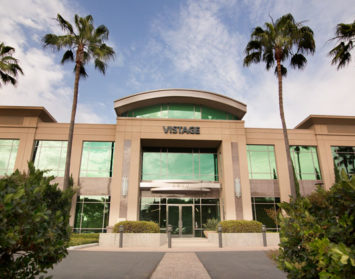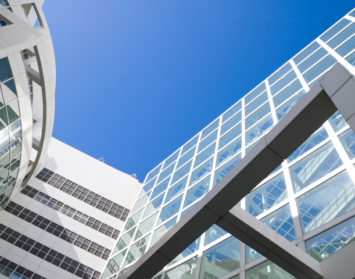Drive down any major street in San Diego and you will undoubtedly see signs on buildings that simply state tenants’ names. Whether a two-story headquarters or a 20-story office building , applying a company’s name to the side of a building is a popular use of otherwise empty space and is an excellent way for companies to use their real estate holdings to stretch their marketing budget. When it comes to which tenants should have signage, the best advice is: If you are big enough to have it, get it.
Of course, the question then becomes, who is big enough? The answer is subjective, as often times a tenant’s ability to acquire signage is based on how much space they occupy and who the other tenants in the building are. As with so many other business considerations, obtaining signage is all in the negotiation.
Building signage is a form of branding and advertising. For retail spaces it is necessary to let customers know where you are. For other types of businesses, signage is less crucial but can still provide multiple benefits, with name recognition leading the list. The perception of a company may be elevated as a dominant sign connotes an image of importance and size.
Signage usually comes in three types: building top signage, eyebrow signage and monument signage. Building top, as the name implies, is at the top of the building and in some instances can be seen for blocks. The next time you are at Petco Park, take time to notice how many building top signs you see.
Eyebrow signs are those found above the main entrance to the building, or at the first or second floor level. These are situated so someone walking or driving down the street will take notice. Monument signage is at ground floor level and can typically be found next to the building’s driveway entrance, main entrance or in the lobby.
The more space a tenant is leasing, the higher up on the building their signage is likely to be.
Typically, tenants in San Diego do not pay monthly rental fees for signage. In large markets such as New York, Los Angeles and San Francisco, premiums may be placed on building signage due to the location of a high-profile building or intersection.
Before signing a lease that provides signage rights, tenants should prepare a visual of what they want the sign to look like, how big it will be and on what facade of the building it should be placed, to ensure the sign is in accordance with the landlord’s sign program and compliant with all relevant city regulations. Typically, the tenant pays all of the costs associated with signage including design, installation, removal and repairs to the building upon removal. Sometimes, tenant improvement funds from the landlord can be reallocated to offset signage costs. Again, it’s all in the negotiation. Building top signs can easily cost $20,000 for low-rise buildings and up to $150,000 for signage on a downtown high-rise. Multiple colors, extensive lighting and size can increase the costs significantly.
The city of San Diego permits signage and regulates such things as how many signs a building can have and where they can be placed. Tenants should know what the permitting regulations are before getting too far into the planning, design and negotiating process.
When negotiating with a landlord, there are a few things to consider. Landlords are going to be more willing to wrap signage into a lease for tenants who lease a majority of their building, rank high in credit worthiness and are willing to accept longer lease terms. Location and size of a building also play a role. For instance, it will be more difficult to obtain building top signage downtown because there can only be one or two building top signs per building, which may represent more than 500,000 square feet of tenants.
Another consideration when evaluating a signage opportunity is to ensure the removal of the existing sign that may be leftover from a previous tenant prior to the new sign being installed. It is important that the removal and repair costs from the prior sign are not passed on to the incoming tenant. Make sure the landlord is paying for the cost to remove that sign and repairs to the building in preparation for your sign.
Landlords understand that signs that can be seen from the freeway or a major thoroughfare have more value to a tenant, so expect to negotiate a bit harder to obtain prime signage.
Though it seems obvious to request signage if you are big enough, not everyone wants it. Banks and financial services companies, service providers such as law firms and accounting firms, and biotechs are most likely to benefit from signage. Back office operations of large corporations and nonprofit organizations are among those that may not want the visibility, so as to avoid unwanted walk-in traffic.
Signage is an integral component of a lease negotiation, sometimes as critical as the rent you pay. Ensure you are armed with the right tools to build leverage in order to obtain the ideal visibility for your firm.
Scot Ginsburg is an executive vice president of Hughes Marino, a global corporate real estate advisory firm that exclusively represents tenants and buyers. Contact Scot at 1-844-662-6635 or scot.ginsburg@hughesmarino.com to learn more.








